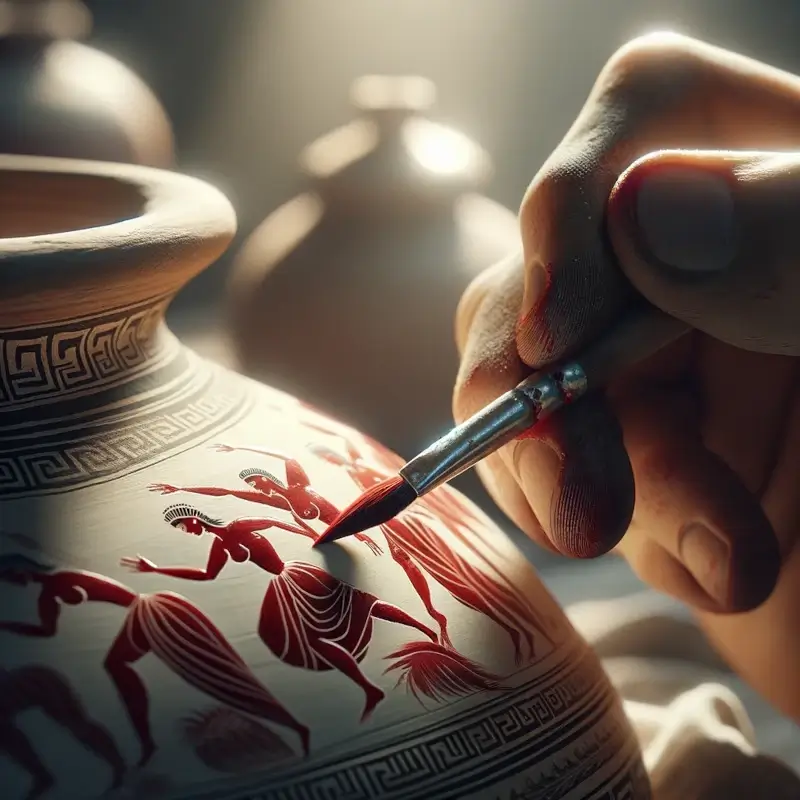Andócides: The Potter Who Revolutionized Greek Art

Andocydes, a pottery artist of ancient Greece, marked a milestone in the history of ceramic art around 530 B.C. with the creation of the red-figure style. This innovative approach allowed for a more detailed and naturalistic artistic expression, contrasting significantly with the earlier black-figure style.
An innovative ceramist
The painter of Andócides (as he is known to differentiate him from the Attic speaker) was an apprentice of Exekias , a master of black figure style , distinguished himself not only for his skill as a potter but also for his innovative vision. Although his works are considered inferior to those of his mentor, his contribution to the art of ceramics was crucial. The red figure style that he developed revolutionized the way figures and scenes were depicted on Greek ceramics..
His “revolutionary” painting technique
The red-figure technique involved painting directly on the body of the amphora or vessel with an engobe that turned red when fired. This technique allowed greater freedom and precision in the details, in contrast to the black-figure method, where the details were engraved on a dark background. The firing process, which included three stages and changes in the kiln atmosphere, was essential to achieve the desired effect.
Emblematic works
Some of Andócides’ best-known works include amphorae depicting Dionysos and his maenads, as well as mythological scenes involving heroes such as Heracles. These pieces not only demonstrated his skill, but also reflected the rich narrative and mythology of the time..
The contribution of Andócides to the art of the Hellenic ceramics is undeniable. His innovation in red-figure technique not only transformed the style and aesthetics of the ceramics of his time, but also influenced future generations of artists and potters. Through his works, Andócides left a lasting legacy, a testament to the creativity and ingenuity of ancient Greece.

Buy unique Greek reproductions
Fortunately, there are artisans who make reproductions identical to the classical works of art that were made in ancient Greece and are only found in museums, making them affordable.
Related publications:


